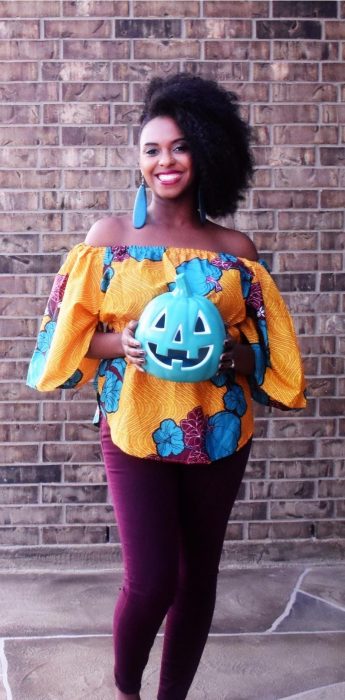Unmasking the faux pas of the Halloween Holiday
heed·ful /ˈhēdfəl/ adjective: aware of and attentive to. (see mindful)
mind·ful /ˈmīn(d)fəl/adjective: conscious or aware of something.

RELATED READING :: Making Mindfulness Work For You
The Call
As an advocate for all things considering the 1% (Luke 15) and as a part of the 10% (demographically), the Halloween season isn’t all just joyful anticipation for me. It’s actually quite the opposite, anxious navigation. Navigating costumes- finding ones that represent my child’s interests and build them up to embrace the magic that being in costume embodies yet also explaining all the ones that don’t make the cut and why. Navigating the filtering of allergen friendly items gathered throughout the activities that we choose to participate in at church, school and our neighborhood. It is exhausting to think about and yet like we mamas do, I persevere to see the joy, to foster hope and to keep the light lit in these small eyes as long as I can. As a person who equally appreciates cultural slang and proper grammar- I personally hate the term “woke”, but what I hate most about it is that so many people missed its purpose- the call to consciousness, for ALL of us. So instead of having us navigate the somewhat offensive concept that we are ALL living life with our eyes closed, let’s just stick to the roots here- that we simply might be unaware (UNconscious) of things that don’t concern us (this is completely natural) or haven’t been conveyed to us. Well here are 2 things that I would love for everyone to be aware of that might make this holiday a little more celebratory and a lot less challenging for the minority.

Halloween Conscious Costumes
Is this Appropriation or Appreciation?
One general thing to remember is that when you are appreciating something you are bringing honor to it. You’re not making a mockery of it or even doing it without much thought. This should eliminate most stereotypical costumes- the challenge here is almost year round you can find these costumes at your local party stores. This is where it is important to remember that what is common isn’t always correct. Let’s start with this, dressing up as real people in their cultural attire is NOT an appropriate costume. The Samoan warrior, the Hawaiian dancer, the Native American, La Catrina, or the Japanese Geisha (ahem) are not for us to emulate. Even if we don’t see this in our immediate communities, they represent a culture that is still either existent or celebrated by those who share it. Additionally, if dressing up as an actual character (from a movie/book, occupation etc.) that has a different ethnicity/skin tone, consider embodying as much of the character as you can without using paint or makeup to change the color of the skin. Regardless of how “professional” of a cosmetic job it is, this provokes amusement and promotes appropriation.
Even with good intention, we have got to be so careful that we are not going beyond fantasy into flippancy.
Full transparency now because I believe humility makes the best teachers out of all of us. I often share that I have a pretty diverse group of friends and so when my daughters were 4 years old they were gifted these beautiful Japanese kimono dresses and because we all thought they were so beautiful and much more unique than any princess dress we’d seen in the stores, we decided for them to dress up as “Japanese Princesses” for Halloween and I even ordered geisha wigs to pull the look together. Now here’s where we crossed that once blurry line (amazing grace), when I want to wear something beautiful even if gifted to me from another country or culture, I know that time and place matters. If my goal was to highlight the beauty of a culture- truly, I should have let them wear it to church or a dance or anywhere honestly that we would’ve opted for a “beautiful dress”. I turned something very special into a “costume” for those few hours and by adding the wig- additionally dismissed the significance and history of the hairstyle and appropriated the Japanese culture by way of my preschoolers. Now I knew better than to do the cultural makeup but that’s again because the color of my skin has always been much too deep to negate and for the same reason too deep to let others appropriate and that’s a lesson for another day.
All in all, be mindful that a history that isn’t yours still deserves preservation and at the very least consideration.

Halloween Conscious Consumerism
Are we Catering or Conforming?
The biggest thing to acknowledge is that with 8 major food allergens and varying levels of tolerance, it can seem impossible to find “safe” treats on a mass candy distribution holiday like this. I tell everyone who seems exasperated by the idea, don’t think about what you CAN’T buy and instead on what you CAN. Again, this mindset helps us not to feel oppressed (by conformity) but more so empowered to be creative and caring (catering to the needs of others). When my son was originally diagnosed with all eight of these allergies, I felt so defeated- so I get it, but once I stopped focusing on how this disrupted my “flow” and comfort, I was able to really refocus on him.
That’s how I feel about Halloween as we celebrate it, it’s simply and purely about the children, so if we can’t be conscious of their needs- what are we doing?
There is a movement for Halloween that has been trending more in the last few years called the Teal Pumpkin Project. This started as an idea where a teal colored pumpkin was left out front to identify the homes where the trick or treaters with food allergies could expect to receive a treat that they could safely enjoy. Now think about how many homes you see along your route that are marked this way, it’s not many. In most neighborhoods there aren’t more than a handful of homes embracing this inclusive idea- again the percentages just seem so low and the extra trouble depending on your perspective just isn’t motivating. So here are some tips that debunk that theory and hopefully encourage you to think about the few as you shop for the many excited children that will stroll your streets and/or attend your events. The overflow of sugar that inevitably makes it into our homes every year, quantities collected in just an hour yet so great it lasts months- it’s no wonder why even non-allergy parents appreciate the homes with teal pumpkins have non-edible treats for their children. These inexpensive items can be found in bulk at your local dollar, super, and grocery stores in the party favor or discount section. Some of crowd and gender-neutral favorites are Bubbles, Stickers, Pencils, Glow sticks, Yo-Yos, Notepads and Bouncy or Squishy Balls. Now if you still want to give out candy to cover the gap of all that is going to be discarded due to allergens for these kids- this next tip is for you. There are indeed Top 8 Allergen-free candies also at your local stores and many are surprised to find that these popular ones are some of the ones that make the cut. Skittles (regular flavors), Starbursts (regular flavors), Dumdum lollipops, Ring-pops and Sour Patch Kids! There are lists available online for more ideas and if your community is using a guide map for the holiday, this would be a great thing to promote on your neighborhood platforms.
All in all, be mindful that we each have the choice to be inconvenienced or inspired by those around us– we get to decide. In every case, our communities can only be as great as the compassion within them.

I am personally looking forward to checking out at least one pumpkin patch next weekend, a trunk or treat with my whole crew at church and finally parading my littlest ones around for what I think is the cutest evening of the year as all ages jump into the spirit of this Halloween holiday! May we all shop wisely and consciously and continue to lean in to real inclusivity- year round. I’ll leave you with this;
This stands true before and beyond the Halloween night,
The TRICK to making the world a better place is in TREATing those who dwell in it right.










